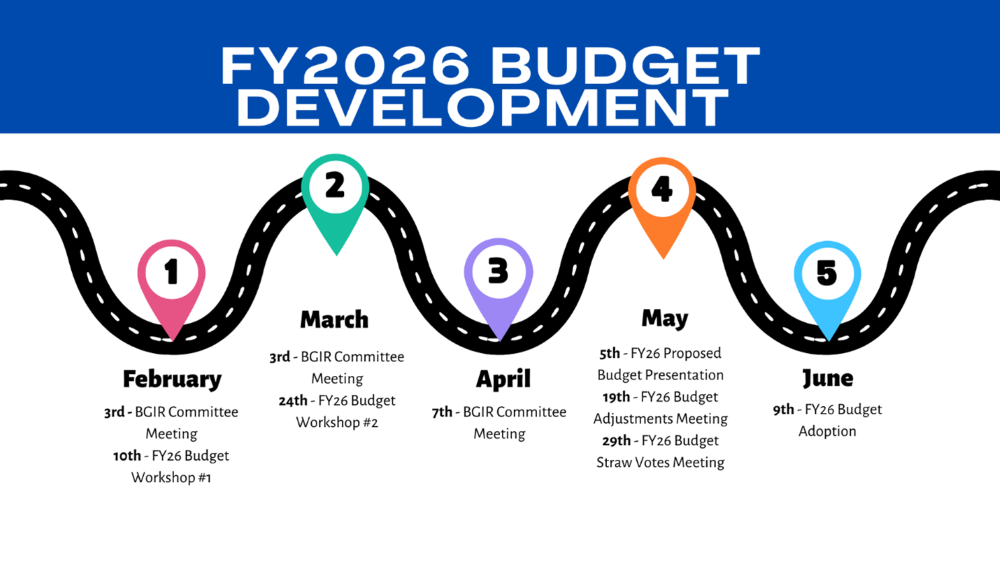Overview of the Budget Process

FY2026 Budget Development Roadmap Description
- February
- 3rd - BGIR Committee Meeting
- 10th - FY26 Budget Workshop #1
- March
- 3rd - BGIR Committee Meeting
- 24th - FY26 Budget Workshop #2
- April
- 7th - BGIR Committee Meeting
- May
- 5th - FY26 Proposed Budget Presentation
- 19th - FY26 Budget Adjustment Meeting
- 29th - FY26 Budget Straw Votes Meeting
- June
- 9th - FY26 Budget Adoption
The city's annual budget is based on a July 1 - June 30 fiscal year and is guided by the following five City Council adopted Strategic Priorities. To learn more about the strategic priority areas and what data we collect to ensure the city is advancing the priorities, please visit the strategic progress tracker webpage.
Strategic priority areas:
- Great Neighborhoods
- Safe Communities
- Transportation and Planning
- Well-Managed Government
- Workforce Development